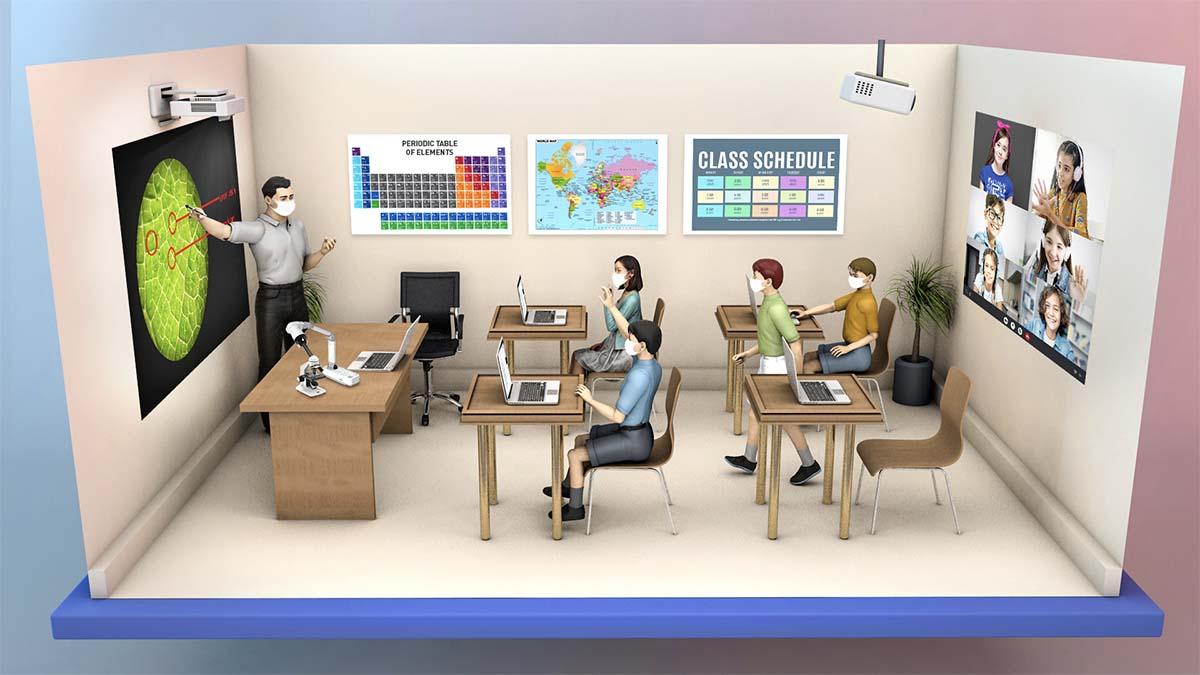Hybrid Classroom Design: Key Strategies for Flexible Learning Spaces
Introduction: The Future of Learning Environments
As education evolves, the demand for hybrid classroom design continues to rise. Flexible learning spaces enable educators and students to seamlessly navigate both in-person and online learning experiences. Whether you’re a school administrator, architect, or instructor, understanding the principles of effective hybrid classroom design is crucial to creating inspiring, adaptable, and tech-ready educational environments.
In this thorough guide, we’ll explore key strategies to implement into your flexible learning spaces, discuss the benefits, share practical tips, and highlight real-world case studies. By the end, you’ll be equipped with expert insights to transform your classrooms for today’s dynamic educational landscape.
What Is Hybrid Classroom Design?
Hybrid classrooms offer an integrated approach where in-person and remote students participate simultaneously through digital technology and agile layouts. This design prioritizes adaptability, accessibility, and inclusivity—allowing educators to adapt to various teaching and learning styles efficiently.
- Flexible learning spaces: Moveable furniture, multi-use zones, and modular setups.
- Technology integration: Interactive displays, video conferencing tools, and reliable connectivity.
- Blended pedagogy: Supporting both synchronous and asynchronous instruction.
By embracing hybrid classroom design, schools can future-proof their learning environments against disruptions and changing educational needs.
Key Strategies for Designing Flexible learning Spaces
1. Invest in Technology infrastructure
- High-speed internet: Provide reliable wireless access to support video streaming and online collaboration.
- Audio-visual systems: Install interactive whiteboards, HD cameras, and microphones for seamless participation.
- Device accessibility: Ensure every student has access to a laptop, tablet, or suitable device.
- Cloud-based management: Use platforms like google Workspace or Office 365 for homework, discussions, and file sharing.
2. Design for Adaptability and Mobility
- flexible furnishings: Choose lightweight,modular desks and chairs that can be rearranged for group work,lectures,or individual study.
- Zoning: Create distinct zones for collaboration, autonomous study, and technology use.
- Writable surfaces: include glass boards or whiteboard walls for brainstorming and visual learning.
- Storage solutions: integrate mobile storage units for materials and equipment.
3. Integrate Collaborative and Individual Areas
- Group workstations: Use round tables, shared screens, and flexible seating for teamwork and discussions.
- Quiet zones: Allocate soundproof pods or alcoves for focused, individual tasks.
- Outdoor learning: Extend the classroom to nearby courtyards or gardens for open-air lessons.
4. Foster Accessibility and Inclusivity
- Universal design principles: Ensure spaces are wheelchair accessible and accommodate diverse needs.
- Assistive technology: Provide software or devices for visual, auditory, or mobility support.
- Clear sightlines and acoustics: Arrange furniture and technology to ensure all students can see and hear instruction clearly.
5. Prioritize Health and Safety
- Optimized ventilation: use air filtration systems and windows for fresh air circulation.
- Easy cleaning: Select surfaces and materials that are easy to disinfect.
- Distancing options: Ensure the layout allows for speedy adaptation to changing health guidelines.
Benefits of Hybrid Classroom Design
Embracing hybrid classroom design delivers tangible advantages for schools, staff, and students. Here are some core benefits:
- Improved flexibility: Easily adapt to changing schedules,class sizes,and learning formats.
- Enhanced engagement: Diverse spaces and technology encourage active participation from all learners.
- Increased access: Remote learners or students with disabilities can fully participate in lessons.
- Future-readiness: Stay resilient against disruptions like public health emergencies or unexpected closures.
- Greater collaboration: Support creative teamwork and peer-to-peer learning.
Practical Tips for Implementing Hybrid Classrooms
Plan Space Usage Around Pedagogy
- Survey teachers to identify the most common instructional formats.
- Allow flexibility for both direct instruction and project-based learning.
Involve Stakeholders
- Ask students for input on furniture and technology selection.
- Get feedback from custodians and IT staff to avoid design pitfalls.
Start Small and Scale Up
- Pilot hybrid classroom designs in a few rooms before revamping your entire facility.
- Iterate based on teacher and learner feedback.
provide Training and Support
- Offer professional development for teachers on tech tools and hybrid instruction methods.
- Create clear protocols for troubleshooting technology issues.
Case Studies: Hybrid Classroom Design in Action
case Study 1: Springfield High School
Springfield High revamped its aging science classrooms into dynamic hybrid labs.By installing mobile lab benches, video conferencing systems, and creating collaborative zones, the school increased student engagement for both remote and in-person learners. The project resulted in a 20% increase in participation and improved learning outcomes.
Case Study 2: Urban Elementary Academy
After shifting to hybrid instruction, Urban Elementary redesigned its classrooms with flexible seating, tablet stations, and interactive projectors. Teachers reported easier facilitation of group work, while parents noted that children adapted quickly to the new learning setup.
First-Hand Experience: Teaching in a Hybrid Classroom
Sarah Miles, a middle school teacher, shares:
“Transitioning to a hybrid classroom was challenging at first, but the modular furniture and improved technology made a huge difference. Students can easily switch from group work to solo assignments. For remote learners, the clear audio-visual setup eliminates the feeling of being left out. Most importantly, it feels like the classroom is designed ‘for’ them, not just the teacher.”
Conclusion: Building Flexible Learning Spaces for Tomorrow
Hybrid classroom design is revolutionizing educational spaces by making them more flexible, inclusive, and technologically advanced. By implementing key strategies for flexible learning spaces—from integrating robust technology to choosing adaptable furnishings—educators can foster environments suited to every student’s needs. As schools look to the future, putting hybrid design principles into practice ensures that learning remains engaging, resilient, and accessible for all.
Ready to transform your classroom? Start with these hybrid classroom design strategies, and empower your students for lifelong success in a rapidly changing world.

